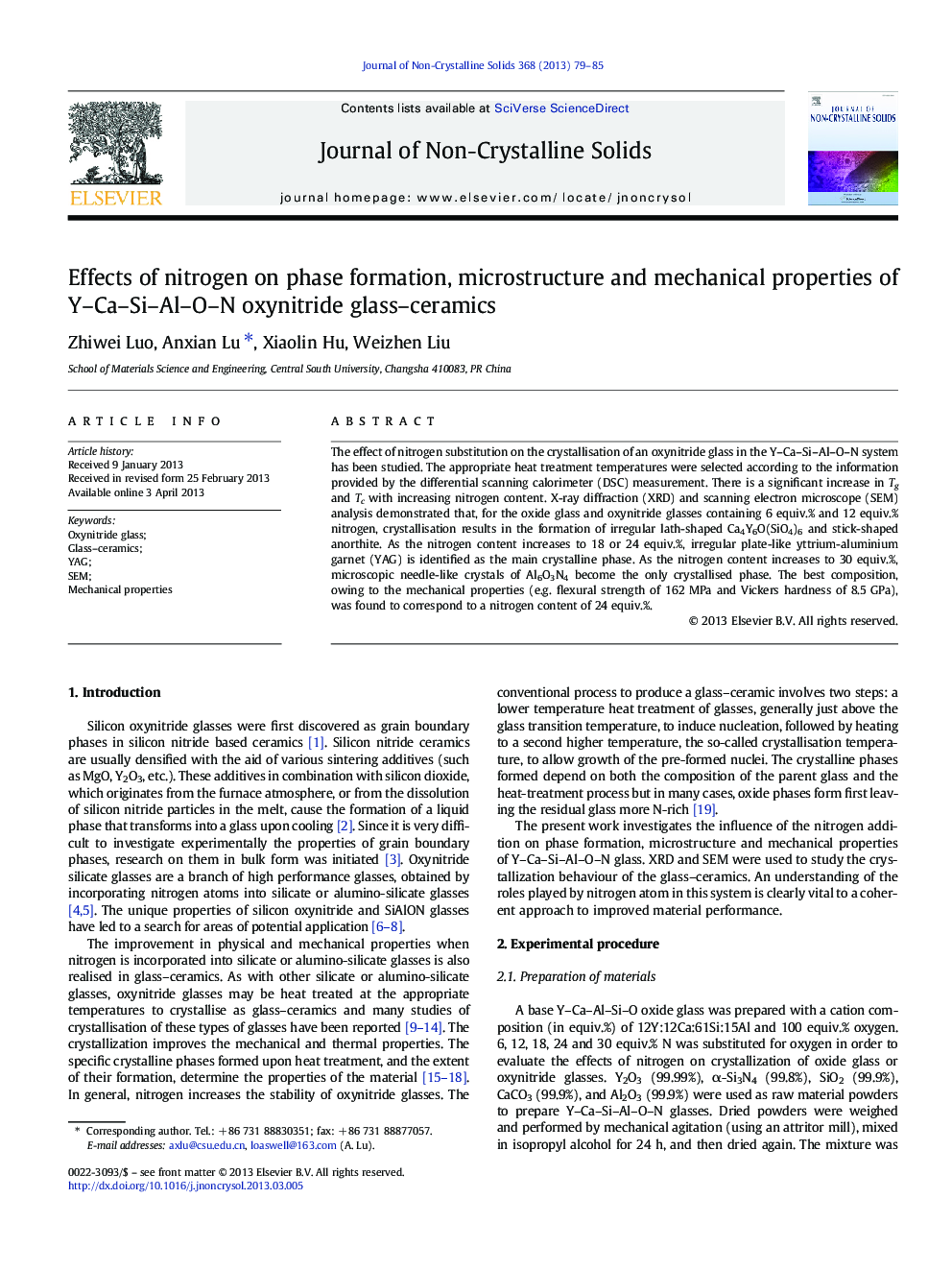| Article ID | Journal | Published Year | Pages | File Type |
|---|---|---|---|---|
| 1481362 | Journal of Non-Crystalline Solids | 2013 | 7 Pages |
Abstract
The effect of nitrogen substitution on the crystallisation of an oxynitride glass in the Y-Ca-Si-Al-O-N system has been studied. The appropriate heat treatment temperatures were selected according to the information provided by the differential scanning calorimeter (DSC) measurement. There is a significant increase in Tg and Tc with increasing nitrogen content. X-ray diffraction (XRD) and scanning electron microscope (SEM) analysis demonstrated that, for the oxide glass and oxynitride glasses containing 6 equiv.% and 12 equiv.% nitrogen, crystallisation results in the formation of irregular lath-shaped Ca4Y6O(SiO4)6 and stick-shaped anorthite. As the nitrogen content increases to 18 or 24 equiv.%, irregular plate-like yttrium-aluminium garnet (YAG) is identified as the main crystalline phase. As the nitrogen content increases to 30 equiv.%, microscopic needle-like crystals of Al6O3N4 become the only crystallised phase. The best composition, owing to the mechanical properties (e.g. flexural strength of 162Â MPa and Vickers hardness of 8.5Â GPa), was found to correspond to a nitrogen content of 24 equiv.%.
Related Topics
Physical Sciences and Engineering
Materials Science
Ceramics and Composites
Authors
Zhiwei Luo, Anxian Lu, Xiaolin Hu, Weizhen Liu,
